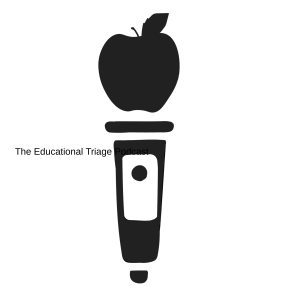
Some Thoughts on “Why Are Reading Scores Declining?” for your investigations.
A National Institutes of Health (NIH) study showed that kids who spend more than two hours a day on screen time activities scored lower on language and thinking tests (kids who spent more than seven hours a day on screens showed a thinning of the brain’s cortex, which manages critical thinking and reasoning).
Scientists are still struggling to understand why humans are able to read and write, despite the fact that we have only been doing it for the last five millennia—far too brief a period for any major evolutionary developments to occur. It is now widely believed that our ability to read and understand written symbols is an accidental offshoot of traits that evolved for different reasons, such as the ability to speak.
In other words, our brains do not have to work hard to obtain the information, so we don’t retain it as well either. For example, when you read a book, you generate the images described in the book with your mind.
“That involves making connections between different parts of your brain,” Dr. Kaufer said. But “when you look at a picture that is already there, it’s much more passive. You’re not working [as many] parts of your brain.”
IN this study, it was found that children who spent a large amount of talking on the phone had lower reading proficiency overall. Those that texted for the majority of their communications had better decoding and proficiency skills due to their use of the language, including “textese”. There was no difference between genders or race.
Reading on mobile devices is therefore often associated with an ‘online reading’ strategy in which the reader does not aim to comprehend the complete text but to achieve a particular goal by locating, evaluating, synthesizing, and communicating information (Leu et al., 2011). This requires problem-solving strategies other than comprehension to search for information and evaluate its relevance to the current goal (Coiro & Dobler, 2007; Henry, 2006). These strategies are often associated with ‘browsing patterns’ that are very different to the sequential scanning that characterizes reading of print (see, e.g., Rayner, 2009) and guided by salient hyperlinks (Fitzsimmons, Weal, & Drieghe, 2013).
UNESCO’s study of mobile reading was conducted in seven developing countries, Ethiopia, Ghana, India, Nigeria, Pakistan, Uganda and Zimbabwe. Drawing on the analysis of over 4,000 surveys and corresponding qualitative interviews, the study found that:
- large numbers of people (one third of study participants) read stories to children from mobile phones;
- females read far more on mobile devices than males (almost six times as much according to the study);
- both men and women read more cumulatively when they start reading on a mobile device;
- many neo- and semi-literate people use their mobile phones to search for text that is appropriate to their reading ability.
The reason for the pandemic’s toll on reading achievement is obvious: It’s hard to learn when schools are closed. But the reason that reading scores fell before the pandemic is less straightforward. Educators and researchers are weighing three theories on what is responsible for the decline: money, instruction or reading itself.
After the 2008 recession, schools across the country cut spending by $600 per student, on average, and laid off thousands of teachers. It took state and local governments seven years to restore their tax bases, muster the political will to approve spending increases and send the money to schools.
https://hechingerreport.org/americas-reading-problem-scores-were-dropping-even-before-the-pandemic/
Researchers are also zeroing in on changes in home reading habits. In student surveys that accompanied the NAEP reading assessments, the percentage of eighth graders who said they read 30 minutes or more a day, excluding homework, declined by 4 percentage points from 2017 to 2019. They were less likely to say they talked about books, went to the library or considered reading one of their favorite activities.
1 "Brain Power: How Screen Time Impacts Kids' Brains - Meet Circle." 13 Apr. 2021, https://meetcircle.com/blogs/stories/brain-power-how-screen-time-impacts-kids-brains. Accessed 17 Apr. 2022.
2 "Brain Power: How Screen Time Impacts Kids' Brains - Meet Circle." 13 Apr. 2021,
https://meetcircle.com/blogs/stories/brain-power-how-screen-time-impacts-kids-brains. Accessed 17 Apr. 2022.
3 "The Effects of Smartphone Usage on the Brain | UNC Health Talk." 16 Sep. 2020, https://healthtalk.unchealthcare.org/the-effects-of-smartphone-usage-on-the-brain/. Accessed 17 Apr. 2022.
4 "Cell Phone Use and Child and Adolescent Reading Proficiency - PMC." https://www.ncbi.nlm.nih.gov/pmc/articles/PMC5036529/. Accessed 17 Apr. 2022.
5 "Is it smart to read on your phone? The impact of reading format and ...." 19 May. 2020, https://link.springer.com/article/10.3758/s13421-020-01046-0. Accessed 17 Apr. 2022.
6"UNESCO study shows effectiveness of mobile phones in promoting ...." https://en.unesco.org/news/unesco-study-shows-effectiveness-mobile-phones-promoting-reading-and-literacy-developing-0. Accessed 17 Apr. 2022.
No comments yet. Be the first to say something!